Welcome to our exploration of the latest trends in construction work gear! From safety wearables to advances in heavy equipment, the construction industry is experiencing a technological revolution. As we embark on this insightful journey, we will delve into emerging aspects like sustainability, the Internet of Things (IoT), and Robotics. We will also examine the changes in workforce diversification, developments in training through Augmented Reality (AR), and Virtual Reality (VR), along with the revolutionizing concept of smart boots. Furthermore, we intend to analyze the downturn in the construction equipment market and its impact. So, tighten your safety helmets, make sure your safety vests are well-fastened, and step into the exciting terrain of construction work gear technologies and trends.
The Workwear Market and Demand
The global trade and industrial sectors have witnessed quite a shift over the past years, with the workwear market reaping the benefits. Closer scrutiny of industry trends reveals that workwear isn't just another cog in the fashion wheel; it's an entire industry in itself. With its market size estimated at a considerable $17.72 billion in 2023, it's evident that investing in workwear is worth considering.
Market Size
The workwear industry is showing promising growth and presents great opportunities in the upcoming future. The soaring value of the global workwear market is estimated to continue its upward trajectory, thanks to consistently increasing demands. With expectations pinned at a steady 4.5% CAGR from 2024 to 2030, the industry is preparing for exciting years ahead.
The market for workwear is driven by innovative advancements, widening exposure, and the ever-evolving needs of various industrial sectors. Everything combined, it shows the workwear industry holds a bright flame in the global marketplace.
Demand for Specialized and Functional Clothing
Skimming past basic and simple clothing, the demands are shifting towards specialized and functional clothing designed to benefit workers' productivity, safety, and comfort. These specialized clothes are now an integral part of several work industries, amplifying workers' performances while putting safety measures at the forefront.
A case in point falls on the perpetual debate surrounding Quality vs. Cost for Work Gear. It's an invaluable discourse, enlightening professionals about the balance between quality and cost when selecting work-appropriate gear. The fashion-forward workwear doesn't compromise on quality, and businesses are noticing the benefits of equipping their teams with such attire.
In essence, the boom in the workwear market and the surge in demand for specialized, functional clothing are effecting significant changes in the industry. These narrative shifts are not only transforming workwear but also impacting the global economy, making workwear a fascinating domain to watch and invest in.
Growing Trends in the Construction Industry
The construction industry, among the world's largest revenue generators, is on a continuous evolution journey. With the advent of technology, the industry has encountered impressive metamorphosis, revolutionizing how construction processes are conducted. There are a few notable trends in the construction industry that have significantly influenced its future. These trends include sustainability, incorporating the Internet of Things (IoT), and introducing robotics.
Sustainability
There's a growing emphasis on creating an environment-friendly approach that reduces waste and utilizes resources efficiently while constructing. Clients worldwide are exhibiting an increased interest in green construction processes and sustainable buildings to lessen environmental impacts. Consequently, developers are moving towards constructing buildings that:
- Utilize solar energy to reduce dependence on non-renewable power.
- Recycle construction waste, reducing landfill use.
- Use sustainable materials like recycled plastics and glass, decreasing the overall carbon footprint.
Adopting sustainable practices has proven to be not just environmentally responsible but also cost-effective version in the long run, doubling the growth and value it provides for companies.
Internet of Things (IoT)
The Internet of Things (IoT) provides endless opportunities for the construction industry. IoT uses internet-connected devices that communicate with each other, providing vast amounts of data that can be used to improve efficiencies, safety and overall productivity in construction projects. Some ways IoT is revolutionizing the construction industry include:
- By offering Real-time data monitoring: Sensors on equipment can measure machinery performance, flagging issues instantly and preventing costly repairs.
- Through Job-site safety: Wearables like smart hard hats can keep track of worker safety, notifying management of any hazards instantly.
- Improving Job efficiency: GPS Tracking in equipment can optimize route planning, saving fuel costs and increasing overall productivity.
The impact of IoT on the construction industry is enormous; it is revolutionizing how operations are conducted, making processes safer, efficient, and more cost-effective.
Robotics
The inclusion of robotics in the construction industry could be the next substantial leap in construction processes. Robotics can take over repetitive, labor-intensive tasks, bringing countless benefits like:
- Increased construction speed: By working round-the-clock, robots can expedite project timelines and deliver faster results.
- Improved precision: Robots eliminate the scope for human error, leading to higher precision in outcomes.
- Enhanced safety: Robots can operate in dangerous areas, reducing the risk of injuries among human workers.
With robotics disrupting the way the construction industry operates, the possibilities are vast and transformative. As the world continues to evolve and technology makes further strides, the construction industry is set to greatly benefit from these growing trends, driving it to new heights of efficiency and productivity.
Downturn in the Construction Equipment Market
The global construction equipment market, a landscape teeming with high-tech machinery and ambitious enterprises, is steadily heading towards a slump. Projections indicate that by 2024, the industry could potentially experience a downturn. This prognosis is largely due to the softening demand for equipment—an essential part of the puzzle that builds this global sector.
Consider the hefty machines excavating earth on a worksite, or the towering cranes transforming city skylines. These pivotal pieces of construction equipment embody the heart of the industry. Nevertheless, the anticipated decrease in the market size hinges on a pivotal factor: demand.
Why is the equipment demand softening? It's not as if world development has hit a dead-end. Cities are constantly evolving, roads are being built, and infrastructure is surging. Yet, the global equipment market has seemingly hit a rough patch. What's behind this incongruity, and how can it be explained?
- Technology Advancements: As the world becomes more tech-savvy, construction sites are no exception. Innovative solutions such as drones, automation, and robotics have started to replace traditional equipment, consequently reducing the demand for conventional machinery.
- Rental Market Rise: The rise in the popularity of the construction equipment rental market has also played a part. Renting equipment offers the advantages of reduced upfront costs and lower maintenance requirements, a tempting proposition for many industry players.
- Economic Conditions: Economic factors, including the fluctuations in global markets and political instability, often influence equipment demand. These factors can deter investments in large-scale equipment purchases.
"The general direction of the global construction equipment market is heading toward a downturn because of the softening equipment demand."
In assessing these key points, the importance of adapting within this shifting global equipment market becomes clear. Flexibility is vital for weathering industry changes, equipment suppliers must understand and maneuver these challenges strategizing sustainably and innovatively.
While a downturn may seem daunting, it can also serve as an impetus for change. A shakeup in traditional models could pave the way for groundbreaking industry evolutions, as companies adopt smarter, more sustainable practices in the face of shifting demand. Thus, it is crucial to remember that downturns are often followed by upturns, offering hope for the future of the construction equipment market.
Indeed, amidst these tumultuous times, the future has the potential to construct an industry sharper in efficiency, richer in innovation, and stronger in durability—one downturn at a time.
Advances in Wearable Safety Technology
As we stand at the threshold of the Fourth Industrial Revolution, the safety industry is witnessing an exciting era of innovation. With the advent of high-tech wearable safety technology, going to work in industries like construction and manufacturing has never been safer. Today, we'll delve into two prominent advancements in this realm - Smart Helmets and Augmented Reality (AR) Glasses - that are elevating safety standards and shaping the future of workplace safety.
Smart Helmets
There's a lot more to modern smart helmets than meets the eye. Far from the traditional hardhats seen on construction sites, today's smart helmets combine robust physical protection with advanced technological features.
- Integrated Communication Systems - With built-in speakers and microphones, these helmets facilitate seamless two-way communication. Workers can easily confer with each other or their supervisors, without needing to remove their helmets or use additional devices.
- Hands-free Environment Monitoring - Equipped with sensors, smart helmets can track environmental parameters like temperature, humidity, gas levels, providing crucial data in real-time to prevent accidents resulting from hazardous conditions.
- Real-time Data Analysis - Helmets can be equipped with built-in GPS, fall detection, and biometric monitoring systems. This feature allows companies to track the well-being of workers, their location, and any potential safety incidents.
AR Glasses
The next big thing transforming safety norms in the industry is AR Glasses, which merge digital and physical environments for workers, offering panoramic safety solutions.
- Surveying Dangerous Environments - With AR glasses, workers can view environments rife with potential hazards remotely and execute necessary safety protocols without being physically present.
- Enhanced Training Procedures - AR glasses can provide immersive training experiences, allowing workers to virtually interact with situations they may face in real life. This practice can lead to safer responses to emergencies.
- Supervisory Assistance - Through shared vision capabilities, supervisors can view a worker's field of vision in real-time, enabling them to advise and warn them about potential risks instantaneously.
Safety at work is undergoing a revolution, and the wearable safety technology is leading the charge. These smart, interactive devices are no longer just the stuff of science fiction. They’re on construction sites, in factories, and in many risk-prone workplaces, enhancing safety protocols and building stronger and safer industrial environments every day. The next generation of safety technology is here, and it's wearing a hard hat and Augmented Reality glasses. Isn't it time we saw things for what they can be in the world of safety?
Ergonomic Design in Protective Workwear
No longer is protective workwear merely about shielding the wearer from potential hazards in the workplace. Nowadays, equal importance is placed on wearer comfort, ease of motion, and even style - all hallmarks of ergonomic design. There has been a rising trend towards incorporating ergonomic design in protective workwear, ultimately enhancing comfort, and significantly boosting job-site safety.
What makes ergonomically designed workwear beneficial comprises several factors:
- Comfort: Ergonomically designed protective gears contour perfectly with the body, reducing discomfort, and stress.
- Durability: High-quality materials used in ergonomic workwear often result in longer-lasting products, making them a cost-effective solution.
- Safety: Improved fit and flexibility can lead to a decrease in accidents caused by ill-fitting or restrictive clothing.
Ergonomic design, as applied to protective workwear, isn't just about a good fit or good looks. It paves the way for better performance and safety standards on construction sites, laboratories, factories, and all places in-between. With employees' well-being kept at the forefront, their productivity levels see an uptick, creating a win-win situation for all involved.
Who said safety can't go hand in hand with comfort? The rise of ergonomic design in protective workwear quintessentially debunks this myth- offering superior comfort while safeguarding workers from potential hazards. Not only does such an initiative celebrate human-centric design sensibilities but also represents a positive shift in workplace health and safety standards on a global scale.
So, whether you're an employer looking to invest in the well-being of your employees, or a worker seeking protection and comfort throughout your work day, the ergonomic design in protective workwear warrants your attention and consideration. It's a worthwhile investment that offers valuable returns: improved safety, enhanced comfort, and elevated worker morale and productivity.
IoT Technologies for Resource Management
The landscape of resource management is undergoing a revolution, with Internet of Things (IoT) technologies transforming traditional methods towards a more comprehensive, efficient approach. Imagine your construction site, where each piece of equipment, every brick and stone, and even the workforce have their own digital identities, allowing for real-time tracking, scheduling, and preventive maintenance. This level of visibility and control is now possible, all thanks to the impressive capabilities of IoT technologies.
The applications of IoT in resource management are numerous. For example, the concept of 'smart construction' is becoming increasingly popular. Here are some key benefits of implementing IoT technologies in your resource management strategy:
- Improved Resource Tracking: IoT sensors can be attached to every piece of equipment, from the smallest power tool to the largest diggers. These sensors enable real-time location tracking, which eliminates the risk of misplaced equipment and reduces downtime.
- Better Scheduling and Deployment: With real-time information at their fingertips, project managers can schedule and deploy resources more effectively, optimizing productivity and minimizing waste.
- Efficient Fuel and Energy Management: IoT can provide detailed analytics on fuel and energy consumption of heavy machinery, facilitating optimization and reducing costs.
- Enhanced Safety and Security: IoT-equipped sites can monitor personnel and equipment in real-time, significantly improving safety and mitigating theft and vandalism risks.
In addition to these benefits, the ability to continuously monitor and analyze resource usage opens up new avenues for improved decision-making and cost-saving initiatives.
Though the incorporation of IoT technologies in resource management requires an initial investment, the potential resource savings, increasing efficiency, and improved safety make it worthwhile. As the field continues to evolve, those enterprises that are quick to adopt and adapt will lead the charge, setting a new standard for resource management. Most importantly, they will find themselves standing on a foundations built not of stone, but data - arguably the most valuable resource in our increasingly digital world.
Embracing the digital transformation is not just about staying competitive. It's about envisioning a future where construction sites are smarter, operations are smoother, and resource management is seamless. Where every stone, every machine, and every worker plays a part in a well-orchestrated symphony of progress. It's a future that's not as far away as you might think, thanks to the power of IoT technologies.
Integration of Digital Tools and Advanced Technologies
Undeniably, the integration of digital tools and advanced technologies shook the core of many industries in 2023. The construction industry was one such sector that significantly benefited from this tech boom. The changes were massive and promising, with firms demonstrating an increased reliance on technology for various operations. From project management to intricate design processes, technology became an essential tool across all aspects of construction industry operations.
The implementation of these digital tools and advanced technologies played a significant role in streamlining the industry practices:
- Project Management: Digital tools drastically changed the landscape of project management in the construction industry. Task scheduling and tracking became substantially easier, effectively optimizing project timelines. Furthermore, it enhanced communication and collaboration among team members, helping to execute tasks more efficiently.
- Design and Planning: With technologies such as Building Information Modelling (BIM), designers and architects started creating more accurate and detailed construction plans. Virtual 3D models of construction projects painted a more realistic picture of what end results could look like.
- Equipment Operation: Advanced technologies trended towards automation, pushing the envelope for equipment operation. Drones for site surveys, GPS for precise measurements, and AI-powered machinery for construction tasks reduced the chances of human error and increased work efficiency.
- Risk Management: Digital tools equipped firms to predict potential pitfalls and issue timely responses to minimize the risk. These predictive analytics helped to recognize potential issues before they became problematic, providing valuable lead-time for solutions and adjustments.
What stood evident was how well the construction industry welcomed and adapted to these technologies. The integration revolutionized the entire modus operandi of this sector. And while the learning curve was steep for some, the benefits they yielded unquestionably outweighed the initial hurdles.
These advancements underscored the importance of staying updated and adaptable. Even though it came with a fair share of challenges, the tech transition was a leap that saw many positives. It's safe to claim that the incorporation of digital tools and advanced technologies was more than a trend—it became the industry standard in 2023. The harnessing of such innovation and technology is what will continue to drive the construction industry forward.
Advances in Heavy Equipment
The world of construction and manufacturing has witnessed a seismic shift in recent years. The once labor-intensive industry has now embraced a new era- the era of advanced heavy equipment. Capturing the essence of innovation, these advancements not only make tasks easier but also foster an environment of safety and efficiency. They are the harbingers of a revolution that continues to redefine industry standards. In this journey of technological progression, three significant advancements stand out: Automation, Electric Vehicles, and Built-in Safety technologies.
Automation
The realm of heavy equipment has not remained untouched by the sweeping wave of automation. Driving efficiency and precision to unprecedented levels, automation has emerged as a game-changer.
- Lesser Human Intervention: Automated equipment runs on pre-defined algorithms, needing minimal human intervention. This not only brings down operational costs but also does away with the risk of human errors.
- Higher Efficiency: Automation means less downtime. These mechanical marvels can work round the clock, thereby increasing productivity manifold.
Automated heavy equipment has brilliantly married technology with functionality, marking a significant milestone in the industry's ongoing technological evolution.
Electric Vehicles
The clamor for sustainable solutions has led to the advent of electric heavy equipment vehicles. It's no longer a question of 'if' but 'when' as more and more companies are embracing this environment-friendly alternative. The rise of electric vehicles in the heavy equipment sector can be attributed to the following factors:
- Lower Operational Costs: Electric vehicles have fewer movable parts, which means lesser wear and tear. Consequently, the maintenance and operational costs are substantially reduced.
- Zero Emissions: The biggest advantage, undoubtedly, is the zero-emission feature. They considerably lower the carbon footprint, making them an eco-friendly option.
While the initial investment may be higher, the long-term benefits of electric heavy equipment vehicles far outweigh the costs.
Built-in Safety Technologies
In an industry where safety takes precedence over everything else, state-of-the-art safety technologies have found their rightful place. Advancements in this regard primarily include GPS tracking, collision detection, and auto shut-off, significantly reducing the risk associated with heavy equipment operations.
The future of heavy equipment rests squarely on the shoulders of technological innovations. Automation, Electric Vehicles, and Built-in Safety Technologies are guiding the industry towards a safer and more efficient tomorrow. The possibilities are endless and excitingly so!
Protective Equipment Trends
As the world moves towards a digital era, so does the field of workers' protective equipment. Today, the industry is witnessing a paradigm shift towards smart, high-tech protective gear in a bid to enhance worker safety. This new breed of protective equipment is a major game-changer, thoroughly revolutionizing how we approach safety in various industries, particularly in construction. The transformation is not just about adopting a new trend; it's about making work environments safer and more efficient.
When talking about this transformation, how can we forget the improvements we've seen in rain gear used in the construction industry? This gear has received significant upgrades over the years, blending practicality with refinement. Today's rain gear offers better protection and performance, ensuring that workers are not only safe but comfortable as well. From smart temperature regulation to automatic visibility enhancement, the added features have played a significant part in transforming safety in construction.
The benefits of using improved rain gear are numerous:
- Comfort: High-tech materials are used to ensure that the gear is comfortable and easy to move in, even during heavy downpours.
- Durability: Improved rain gear is likely to last longer, even in harsh conditions, bringing down the frequent costs of replacement.
- Safety: The gear is fitted with smart features such as high-visibility colors and reflective patches to ensure workers are visible even in poor light.
The revolution is not without reason. The advent of improved rain gear in construction has created a safer and more productive environment for workers. For instance, the gear's temperature regulation capability ensures that the workers don't overheat or become too cold while working, thereby reducing the possibilities of heat stress or hypothermia. Increased durability means that gear doesn't break down easily, ensuring long-term protection.
Remember, it's not just about embracing technological advancement; it's about creating workplaces where safety is not just a precondition but a way of life. So when we talk about the shift towards smart protective gear, it's undisputed that the reshaping of the rain gear is a prime example of this transformation. To see how technology is Transforming Safety with Rain Gear in construction, follow the link.
Undeniably, the protective equipment industry is heading towards a brighter and safer future. The key to this transformation lies in understanding the value of advanced technology and how it can help safeguard workers' lives, enhance comfort, and efficiency. And the improved rain gear is just a start. We'll continue to see more innovations in this field in the future, taking us one step closer to making every workplace safe.
Diversification of Workforce in Construction Industry
The construction industry, once a homogeneous landscape, has been steadily transforming into a mosaic of diverse profiles. This change can be largely attributed to the rising demand for skilled labor and the prevailing labor shortages in the sector. A more diverse workforce brings together a wider array of talents, experiences, and perspectives, contributing to innovation and growth in the industry. Here we explore why workforce diversification in the construction sector is not just a welcome shift, but a necessary one in response to the evolving job market.
Workforce diversification is transforming the construction sector in distinguishable ways. Let's take a look at some of the most noticeable changes:
- Gender Diversity: This has been a significant area of progress, with more women entering the traditionally male-dominated construction sector. The gender diversity gap is gradually closing.
- Ethnic Diversity: Ongoing efforts to ensure equal opportunities for all have seen the industry becoming more ethnically diversified than ever before.
- Age Diversity: With both younger and older generations actively involved in construction, the industry now enjoys a broad spectrum of proficiency and experience.
- Skill Diversity: As construction processes grow more complex, the requirement for a diverse skill set has quintessentially underscored the need for workforce diversification.
All these forms of diversity are instrumental in shaping a vibrant and inclusive construction industry, capable of meeting the changing demands of a dynamic job market.
Speaking of the changing job market, the rise of digitalization and globalization have given way to a new era in the construction industry. Today, construction companies are recognizing the need for demographic, cognitive, and skill diversity to face various global and technological challenges. By embracing diversity, construction companies will not only respond effectively to labor shortages, but they will also unlock potential paths for innovation and increased productivity.
It's safe to say, diversification of workforce in the construction industry is not just token representation. Instead, it’s a strategic response to labor shortages and the changing job market. Just as a building stands stronger with a mix of materials, the construction industry stands more resilient and resourceful with a diverse and inclusive workforce. It's time the industry appreciates the strength in diversity, not just conceptually, but also in their day-to-day operations.
Improvements in Construction Training with AR and VR
The awe-inspiring worlds of Augmented Reality (AR) and Virtual Reality (VR) are making a colossal impact across numerous industries. One such area feeling the jolt of this digital transformation is the realm of construction. By focusing on AR and VR technologies, we are about to redefine the landscape of construction training with incredible upscale. From classrooms to hands-on training sessions, AR and VR are enhancing the learning experience, making it more exciting, realistic, and cost-effective.
AR and VR have rooted themselves as transformative technologies in the construction industry. Not only do they offer immersive experiences but they also serve up tangible benefits. So, how are they reshaping construction training?
- Realistic Simulations: VR is an excellent tool for providing practical training in a controlled environment. Trainees can don immersive headsets and practice construction tasks in a virtual world, which mirrors the real-world project site. This hands-on approach helps trainees gain necessary skills without the risks associated with physical environments.
- Instantaneous Feedback: AR can offer real-time feedback to trainees, helping them correct mistakes on the spot. This feature significantly accelerates the learning curve, enabling trainees to achieve proficiency sooner.
- Cost Saving: With AR and VR technologies, we ease costs incurred on physical training materials. As such experiences are digital, there's no need for continuous replenishment of supplies, contributing to substantial savings over time.
- Accessible Learning: Trainees no longer need to be at a specific location for their training. They can learn from anywhere, which encourages continual learning even outside regular training hours.
As per an adage, "Practice makes perfect," AR and VR technologies are taking practice to new heights. By creating realistic simulations, AR and VR hold a substantial promise to revolutionize construction education. However, it isn't merely about creating simulations. The real magic stems from the invaluable feedback that helps trainees rectify their errors instantly.
Imaging a world in which mistakes are not feared, but embraced as stepping stones to learning. In essence, that's what AR and VR achieves - making the road to expertise a more appealing and less daunting journey.
Furthermore, by incorporating these technologies, we notice a marked reduction in the cost of the training. The act of removing physical elements to construction training ushers in a new era of cost-efficient, accessible education.
Contrary to the belief that technology drives us apart, AR and VR are facilitating unparalleled levels of accessibility. In this virtual realm, geographical barriers become practically non-existent, allowing the thirst for knowledge and skills to be the only determinants of learning.
In this technologically evolving era, AR and VR take forefront in improving construction training effectively. They have already begun paving the way for a more skilled, efficient, and safety-conscious workforce in the construction industry.
Development of Smart Boots
The rise in digitization is pushing boundaries and challenging traditional norms in almost every industry. One such innovative stride is the development of smart boots—footwear integrated with cutting-edge technology. These modern upgrades to the traditional boot are designed not just for premium comfort and style, but to serve a higher purpose in the area of safety.
Imagine a pair of boots capable of tracking worker movements, improving workplace safety, and enhancing efficiency. Sounds futuristic, right? Well, it's not – these boots are being made right now!
At first glance, these state-of-the-art boots look like any other pair in your closet. But the real difference lies within. Carefully concealed within the design are tiny sensors and technologically advanced elements that do much more than just keep feet warm and dry.
These smart boots have the potential to:
- Track Worker Movements: This feature is particularly beneficial in large constructions sites, warehouses, or other workplaces where monitoring employee location can be crucial for safety and productivity purposes.
- Enhance Safety: Detection of potential hazards or injurious movements such as a slip or a fall increases overall safety by a significant margin. By the time a worker registers the threat and reacts, it could already be too late. In contrast, smart boots detect such anomalies instantly and send out alerts, enabling quicker responses.
- Improve Efficiency: By analyzing individual movements and identifying patterns, these boots can help business owners streamline daily operations while avoiding overexertion by employees, leading to a more efficient and healthier working environment.
This exceptional blend of fashion, technology, and safety can change how we perceive footwear. We don't just wear boots to look stylish or protect our feet from harm, they now form an integral part of our environment, helping us navigate and respond better to the space around us.
The advent of these smart boots marks a new era where technology blends seamlessly with everyday life. It also highlights the importance of progressive innovation and the role it plays in restructuring our experiences. Although in its nascent stages, the world waits eagerly to see this unique amalgamation of footwear and technology in action, keeping a keen eye on the trajectory of this intriguing journey.
In summary, as technology continues to stride forward, "These boots were made for walking" might soon be replaced by "these boots were made for connecting."
Please note: This is a topic still under development. This article aims to highlight the possibilities and potential benefits of integrating technology into footwear. The effectiveness of such boots in the real world is yet to be fully established.
Traction in Ergonomically Designed Safety Clothing
Delving into the evolving world of workwear, an invigorating trend is steadily gaining momentum—ergonomically designed safety clothing. These are garments sculpted to assure due diligence to safety standards while ensuring the comfort of the wearer, even amidst the harshest working conditions. Their progressive increase in popularity marks a pivotal shift in the landscape of occupational clothing, wisdom borne out of necessity—and the shared global experience of fostering wellbeing in work environments.
The surge in demand for ergonomically designed safety clothing is neither sudden nor surprising. Rather, it represents a holistic acknowledgement of the essentiality of comfort and durability in workplace attire. The criteria are simple yet profound: clothing pieces that are visually appealing, durable, safe, and comfortable. All the while, these pieces pay homage to the crucial tenets of ergonomics, fostering better productivity and enhanced wellbeing during work.
Consider the following pillars for the mounting traction in ergonomically designed safety clothing:
- Safety First - These garments comply with rigorous safety standards, offering immense protective value.
- Embrace of Durability - The longevity of these clothing pieces is undebatable. Crafted with quality materials, they withstand demanding work conditions with ease.
- Comfort Centric - Ergonomic safety clothing champions comfort—a testament to the saying, "Happy employees are more productive."
- Aesthetically Pleasing - No longer overshadowed by bulky designs, modern ergonomic clothing merges fashion with function.
A testament to the strength of this growing trend is the popularity of products that incorporate both Comfort and Durability in Rain Gear. These products represent wearable innovation at its best, boasting cutting-edge technology, robust construction, and ergonomic design. They efficiently combine safety standards with wearer comfort, illustrating the monumental strides being made in the workwear arena.
The traction in ergonomically designed safety clothing illustrates the evolving expectations of the modern workforce. As they reconcile safety requirements, durability, and comfort, these garments serve as catalysts, propelling us towards a more balanced, industrious work environment that prioritizes the wellbeing of its employees. Awash in a wave of change, the workwear sector is poised for occupational clothing to evolve beyond conventional boundaries and redefine the future of safety gear.
Sustainability in Construction Industry
Sustainability in the construction industry is no longer a niche concept but rather, a fundamental mandate driven by social, economic, and environmental imperatives. The industry's course into the future is charted upon the pillars of sustainable practice - as it becomes increasingly vital for infrastructural development to meet the environmental standards set by the modern world.
Indeed, the construction industry has a crucial role to play when it comes to sustainability. With a significant impact on environmental health, energy consumption, and resource depletion, construction activities are under constant public and scientific scrutiny. In response, companies have been innovatively striving to minimize their ecological footprint, leading to sophisticated developments and enhancements in sustainable construction - these range from the deployment of eco-friendly building materials to the incorporation of energy-efficient technologies and processes.
Key themes of sustainability in the construction industry include:
- Material Management: The sector now extensively utilizes recyclable and biodegradable alternatives to traditional materials, alongside more durable outputs that ensure longer service life and reduced waste.
- Energy Efficiency: Techniques for reducing energy consumption in buildings, such as renewable energy sourcing and insulation optimization, are now common practices.
- Water Use: Water-efficient devices and rainwater harvesting systems are being integrated into building designs to minimize water use and wastage.
- Waste Reduction: Construction sites now employ waste management strategies to recycle or reuse construction and demolition waste.
- Land-Use Efficiency: There's a growing trend of developing high-density urban areas to limit land consumption and promote mixed-use development.
Additionally, significant strides have been made in the sustainable workforce aspect, emphasizing safety and health provisions, worker satisfaction, community improvements, and equitable opportunity.
The result is an altogether greener and more responsible industry. These emerging trends denote a crucial shift in the industry's modus operandi, prioritizing sustainability as much as profitability. Firms are recognizing the 'triple bottom line' benefits, appreciating not just the environmental improvements, but also the cost savings and enhanced public reputation that sustainability investments can yield.
This commitment to sustainability in construction is not merely an aspiration, but an imperative action to address the pressing environmental challenges of our times. So, it seems apt to say, the future of construction is not just building, but sustainably building.
Conclusion
As we wrap up, it's clear that the construction work gear industry continues to advance and strive for safety, efficiency, and effectiveness. Even amid downturns in the market, technology advancements like Smart Helmets and AR Glasses are making monumental impacts. Sustainability and IoT tech are entering the scene, completely revolutionizing resource management and ergonomic safety. Also, trends show a strong pivot towards ergonomic and protective gear, where companies like Rain Gear Pro are leading the charge, crafting lifelong products like their chainsaw safety pants that are designed to tackle demanding work conditions.
From smart boots to industry diversification, and the masterful integration of digital tools, the landscape of the construction industry continues to evolve at an unprecedented pace. With companies like Rain Gear Pro steadfast in their quest for innovative, durable, and tech-friendly gear, the industry is set to conquer future hurdles with relative ease. This is the era of work gear that thinks, protects, and strives to make your work day safer and more productive. For high-quality, Canadian-made work gear fit for the increasingly savvy construction industry, check out Rain Gear Pro.
Safety, comfort, and innovation: that's the unstoppable trend pushing the construction industry forward. And with industry juggernauts leading the charge, the future of work gear has never looked brighter.
Frequently Asked Questions
-
What are the latest trends in construction work gear?
Some of the latest trends in construction work gear include lightweight and breathable fabrics, high-visibility designs, ergonomic features for comfort and flexibility, moisture-wicking and quick-drying materials, and increased use of technology such as smart safety helmets and wearable devices.
-
Why is lightweight and breathable fabric important in construction work gear?
Lightweight and breathable fabric in construction work gear helps keep workers comfortable and cool, especially in hot or humid conditions. It allows for better airflow, reduces sweating, and minimizes the risk of heat-related illnesses.
-
What are ergonomic features in construction work gear?
Ergonomic features in construction work gear refer to design elements that ensure comfort, flexibility, and ease of movement. This may include adjustable straps, stretchable panels, padded knee pads, and strategically placed pockets for easy access to tools and equipment.
-
How do moisture-wicking and quick-drying materials benefit construction workers?
Moisture-wicking and quick-drying materials in construction work gear help to keep workers dry by pulling sweat away from the skin and allowing it to evaporate quickly. This helps to regulate body temperature and prevent discomfort and chafing during long hours of work.
-
What are some examples of wearable technology used in construction work gear?
Examples of wearable technology in construction work gear include smart safety helmets with built-in cameras and sensors to monitor vital signs, GPS tracking devices for real-time location monitoring, and smart clothing with embedded sensors that detect hazardous conditions or excessive strain on the body.



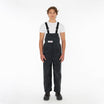
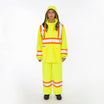
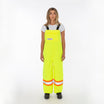
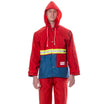



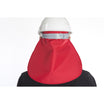
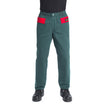
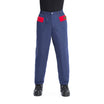
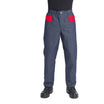
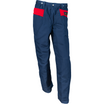




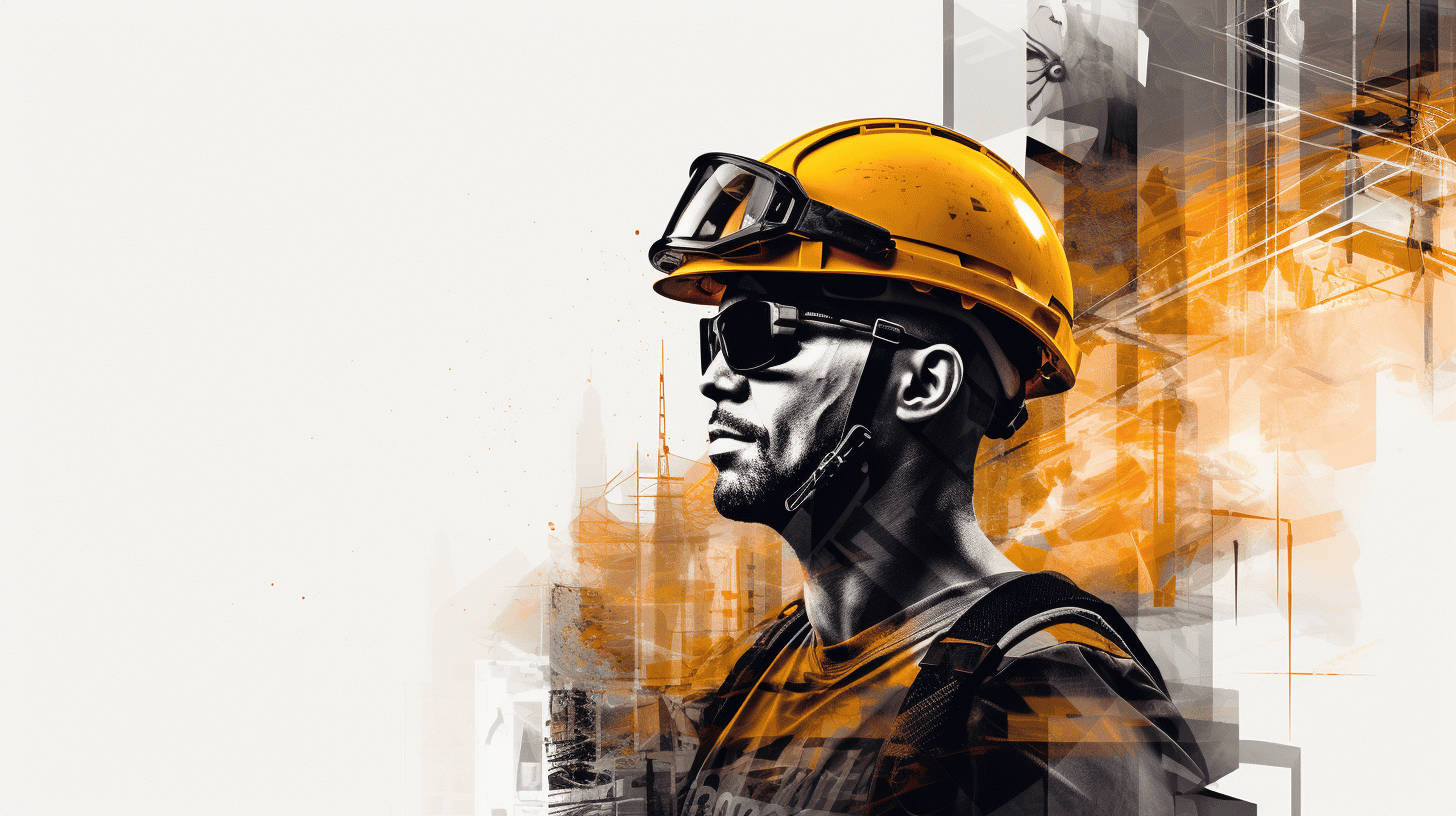

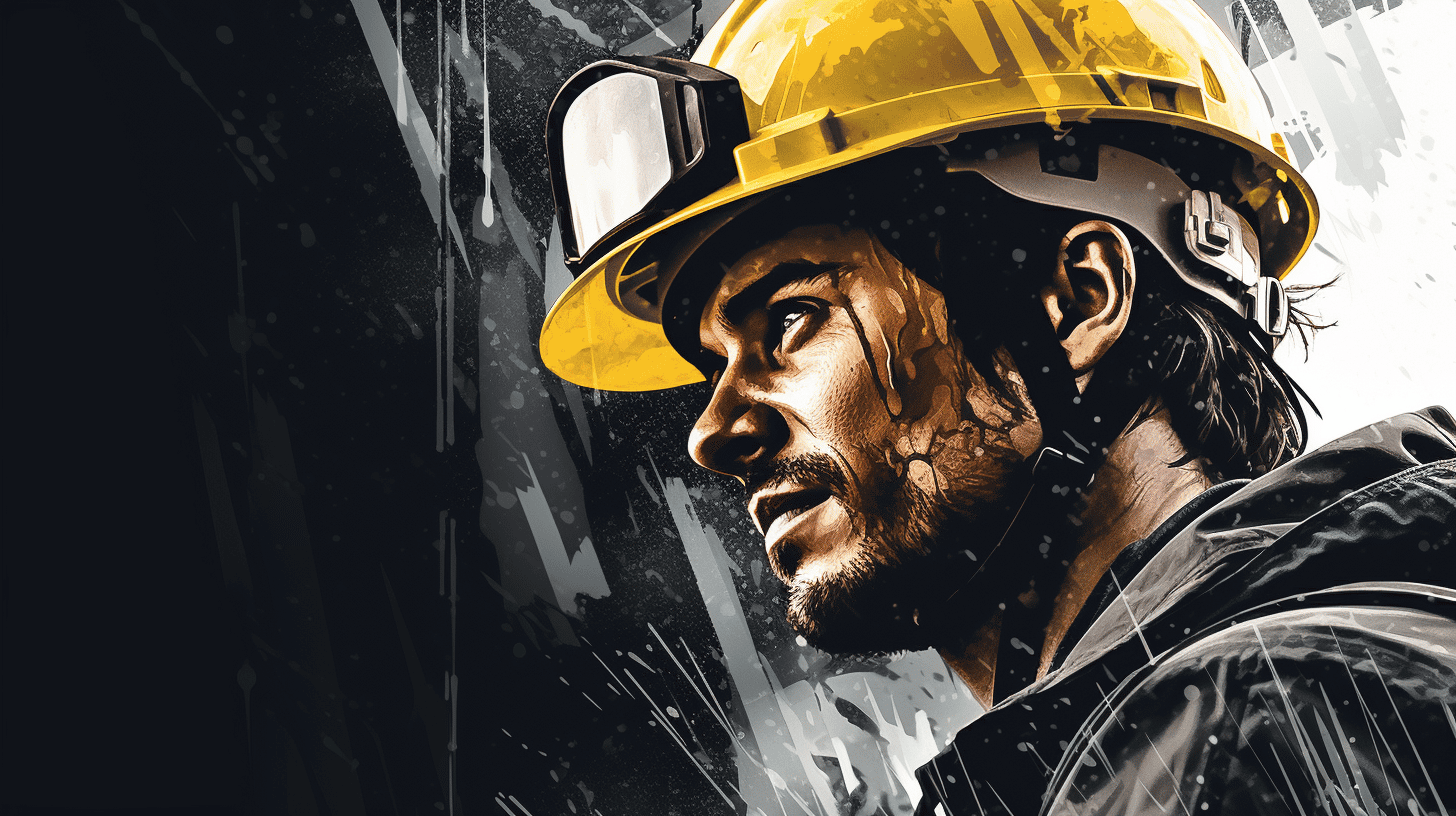
Leave a comment
This site is protected by hCaptcha and the hCaptcha Privacy Policy and Terms of Service apply.